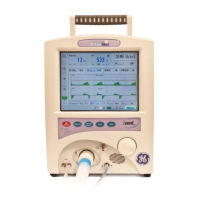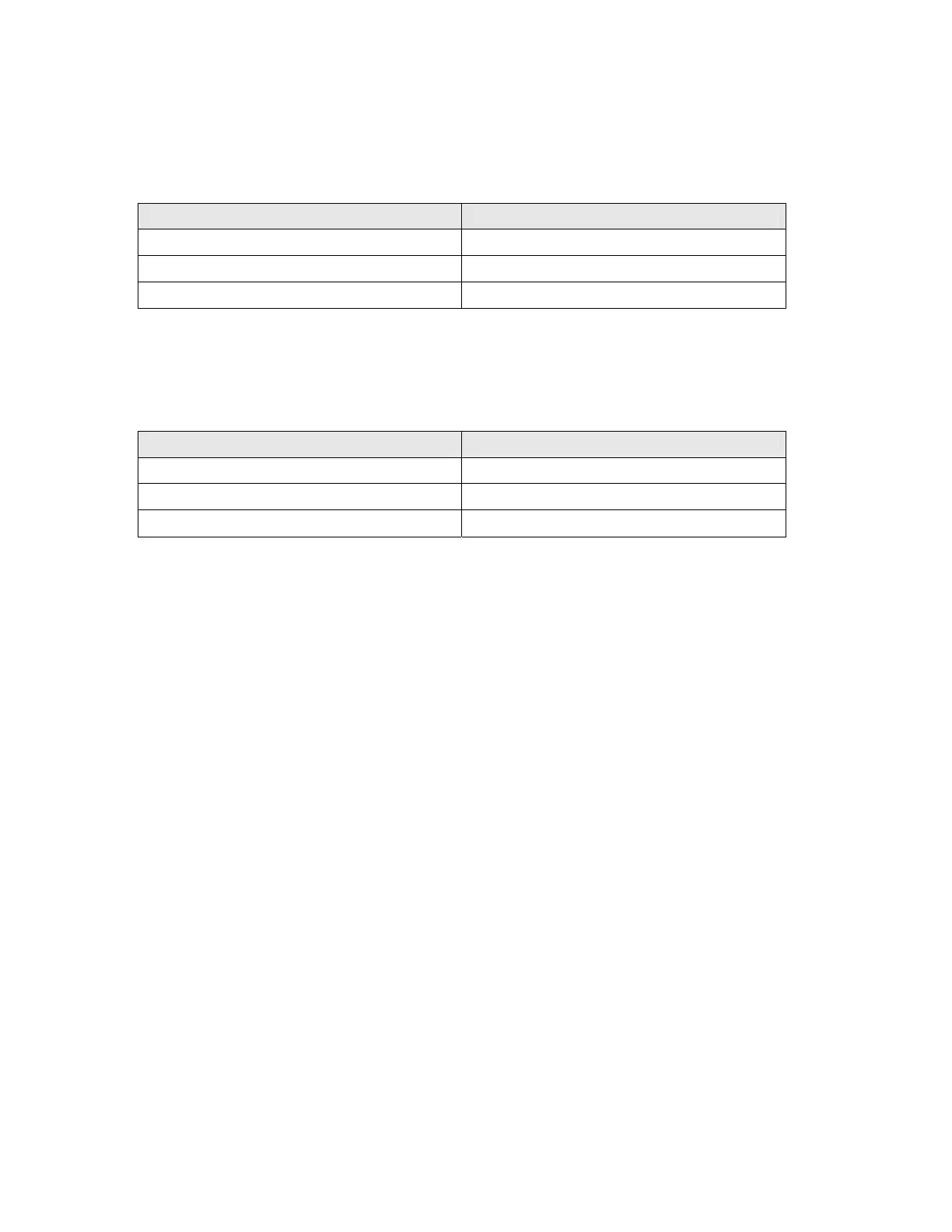Appendix F: Hold Function and Static Mechanics Measurements
237
The duration of the inspiratory hold is dependent on the Tidal Volume of the
patient. It is set according to the following table:
Table 17: Maximum Inspiratory Hold Time for Different Tidal Volumes
Tidal Volume Time
Vt < 200 ml 1.0 sec
200 ml < Vt < 500 ml 2.0 sec
Vt > 500 ml 3.0 sec
The duration of the expiratory hold is also dependent on the Tidal Volume
delivered to the patient. It is set according to the following table:
Table 18: Maximum Expiratory Hold Time for Different Tidal Volumes
Tidal Volume Time
50 ml < Vt < 200 ml
1.0 sec
200 ml < Vt < 500 ml 2.0 sec
Vt > 500 ml 4.0 sec
Note that no compensation needs to be made for the length of the ventilator
tubing as the volume measurements are made at the flow sensor which is
located at the patient Y connector. The compliance of the respiratory tubing does
not contribute to the volume measured during exhalation.
All calculated respiratory static parameters are displayed in the Mechanics
window with the appropriate time when the respective hold maneuvers are
performed (See page 238 Reviewing Static Mechanics and Intrinsic PEEP
Measurements.).
CLINICAL CONSIDERATIONS
The clinician should note that the use of static hold maneuvers may distress the
patient as it prolongs the inspiratory phase of the breath, which delays
exhalation. Active breathing during the hold maneuver affects the measurement
adversely by creating pressures not related to the relaxed tissue properties of
their respiratory system. It is therefore advised that this maneuver be performed
on a patient during sleep, or when the patient is not conscious.
END EXPIRATORY HOLD
In order to allow the respiratory system pressure to equilibrate during the
expiratory phase, it is necessary to occlude the patient’s airway and allow the
lung pressure to equilibrate with the mouth pressure. To achieve this, the
iVent
TM
201 performs an expiratory hold maneuver. The resultant equalized
pressure indicates the total amount of pressure that resides in the alveoli that
does not have time to empty between breaths. This is known as intrinsic PEEP or
auto PEEP. Clinicians utilize this measurement to understand if they have set the

